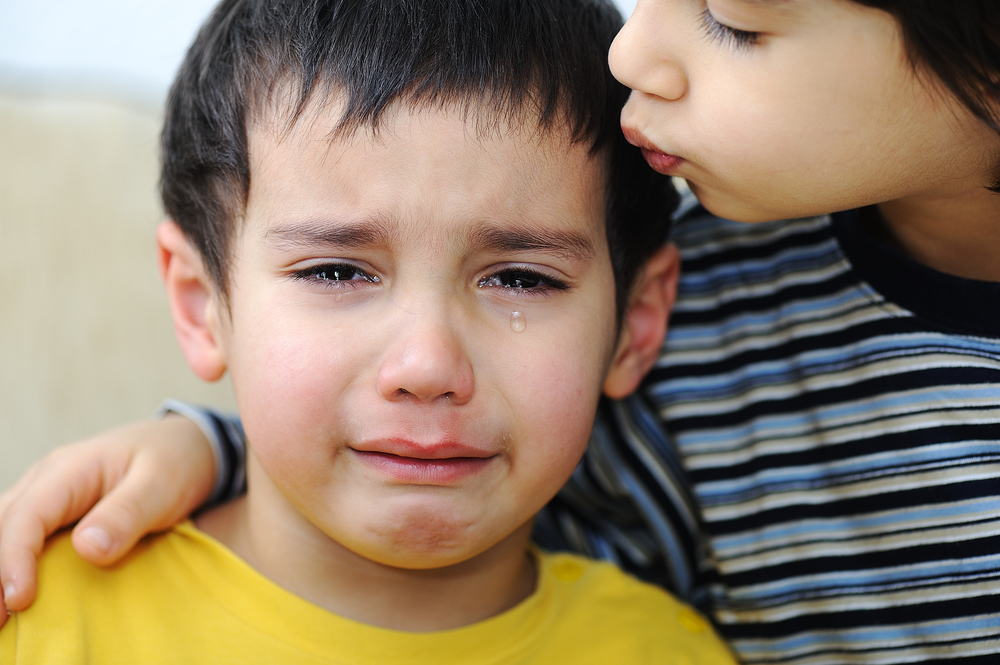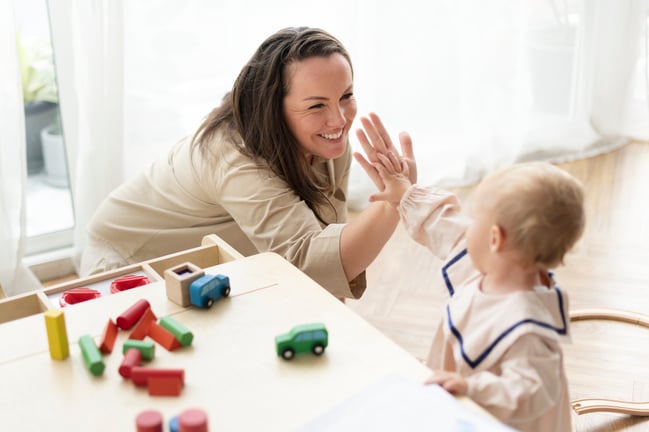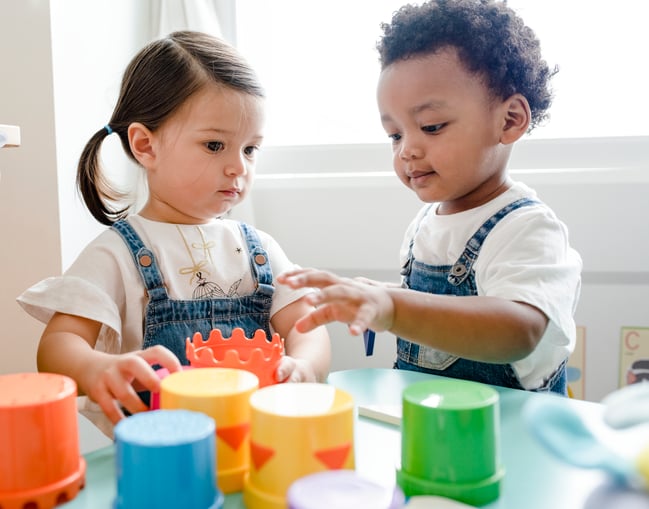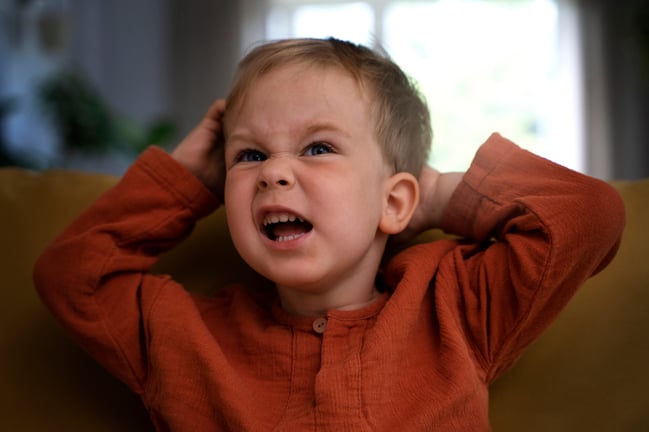
Social Development and Emotional Development
Older Toddlers (18 to 36 months)
Components and Developmental Indicators
Older Toddlers (18 to 36 months)
Components and Developmental Indicators
Developmental Indicators
SDED Goal-1: Children demonstrate a positive sense of themselves as unique and capable individuals in play and everyday tasks.
![]()
Begin to name some body parts when asked. (“Nose,” when adult asks, “What’s this?” while touches nose.)
![]()
Identify self by name or a personal pronoun (I, me).
![]()
Express preferences and make choices (When offered an object they do not want, will respond “No!”).
![]()
Use simple terms to describe their characteristics and what they can do.
![]()
Show increasing confidence and pleasure with their accomplishments.
![]()
Explore things that interest them in their environment.
Developmental Indicators
SDED Goal-2: Children form relationships and interact positively with familiar adults in play and everyday tasks.
![]()
Form close relationships with their primary caregivers and other familiar adults.
![]()
Seek help from trusted adults when upset (when fearful or having difficulty with something).
![]()
Feel more secure and calm more quickly, when primary caregiver is with them.
![]()
Use simple language to ask adults for help or to do something with them (sign or say “more” or “up up.”).
SDED Goal-3: Children form relationships and interact positively with other children in play and everyday tasks.
![]()
Show positive emotion and turn taking, with guidance and support, when playing with familiar playmates.
![]()
Show affection or preference for particular children (spontaneously hug, call another child a friend).
![]()
Remember and use names of familiar playmates.
![]()
Use appropriate words to influence playmates’ behavior (“Play with me.” “Please stop.”).
![]()
Participate in play with other children.
Developmental Indicators
SDED Goal-4: Children demonstrate self-regulation, prosocial behaviors, and participate cooperatively as members of a group in play and everyday tasks.
![]()
Demonstrate pro-social behaviors, participate in routines, and transition from one activity to the next with adult guidance and support (need adult reminders to self-regulate and return toy they have taken from another child).
![]()
Adjust their behavior to fit situations (tiptoe near a sleeping baby, use a quieter voice inside, runs outside).
![]()
Accept limits and redirection (accepts “no” and moves onto another activity without getting overly upset).
![]()
Evaluate own and others’ actions as right or wrong (pointing out that another child is climbing on the table).
![]()
Show caring and cooperation (help to put away toys, offer to help another person).
![]()
Wait for a short time to get what they want (a snack), with guidance and support.
SDED Goal-5: Children demonstrate an ability to identify and regulate their emotions in play and everyday tasks.
![]()
Frequently use simple words or signs to communicate needs and feelings.
![]()
Manage emotions and control impulses with guidance and support (instead of hitting says, “I don’t like that!” or waits by door instead of running ahead when excited to go out.)
![]()
Display emotional outbursts less often.
![]()
Use physical ways of expressing themselves when their feelings are intense (jumping up and down when excited).
SDED Goal-6: Children recognize and respond to the needs and feelings of others in play and everyday tasks.
![]()
Use simple words and/or actions to comfort another child or adult who is upset (provide a comfort object, hugging a peer who is crying and says, “okay?”).
![]()
Show concern for others (share a toy with someone who doesn’t have one).
![]()
Offer help to meet the needs of others (pick up item someone dropped, help another child who is having trouble building a block tower).
![]()
Recognize facial expressions or actions associated with different emotions.



